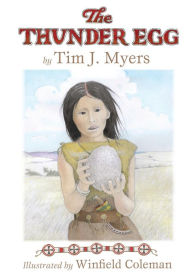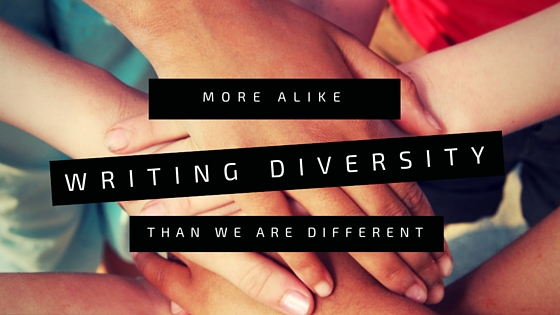Tim J. Myers | The Children’s Book Review | September 24
Unless you live under a rock, you know there’s great ferment right now concerning diversity. The “WeNeedDiverseBooks” campaign is in full swing, tweets, posts and op-ed pieces are flying, and multiculturalism was highlighted at the recent SCBWI conference. The wonderful Lin Oliver even took the uncommon step of sending a diversity-themed email to the entire membership. And clearly this is a crucial issue of our times.
But it brings up a big question. When literature crosses cultural boundaries or engages the Other generally, how do we judge authenticity and representation? Who’s allowed to tell which stories and tackle which topics? Just now, it seems to me, there’s a lot of confusion and disagreement about this.
I remember decades ago when I first saw a Japanese musician performing Western music, a cellist playing Bach. I was surprised—which, obviously, could be seen as racist. What, Asians can’t play European music?! I instantly recognized how ridiculous that assumption was.
Don’t get me wrong—cultural appropriation and misrepresentation are very real. Members of one culture, especially an oppressing/colonizing culture, may use a second culture’s story, song, dance, symbol, etc. in a selfish or shallow way. I think of Pat Boone’s hit-version of Little Richard’s “Tutti Frutti,” and of many white musicians who did likewise. Or the cultural item may be exoticized or misrepresented, even desecrated. I know of at least two American bars with “Kiva” in their names—which insults the spiritual life of the Hopi and other Pueblan peoples.
But how easy it is to take this too far! And the world is getting smaller; separatism, in whatever form, just won’t work any more. Who, for example, would accuse UK country-music bands of appropriating American culture? Boone’s “Tutti Frutti” is, to my ears, a misrepresentation–but do we forbid, say, Elvis from mixing white and African-American styles? Didn’t he create a powerful new synthesis that crossed racial barriers? Can a male writer write a female character? If not, female writers can’t write male characters either. Should folktales and myths be restricted to their cultures of origin? Where does it all end?
I think two principles will help us here. The first is that no one owns particular topics, experiences or perspectives. I don’t mean to deny intellectual property; individuals own works they themselves create. But the idea that an artist can only express what he or she is or has directly experienced leads to a new separatism. I believe in the imagination, its mysterious ability to leap over boundaries and misunderstandings. People can debate whether such work is successful, and members of the target-group of course have special authority here. But no one, I think, should forbid the effort.
However, this leads to a second principle: Artists working across boundaries must demonstrate profound respect for and deep knowledge of the Other. This means a thoroughly open-minded attitude—and much labor in terms of research and questioning one’s own assumptions.
 My recent picture book The Thunder Egg is, I think, a good example. This literary folktale set among the pre-Contact Cheyenne resulted from a lot of research on my part, not to mention a lifetime of reading and other experience concerning Native American cultures. I was then blessed to find an illustrator whose art is superb—but who’s also a national scholar of indigenous peoples, specializing in the Plains tribes. Winfield Coleman’s knowledge of Cheyenne life is profound, from cosmology to folkways; he corrected my inclusion of a cradleboard, for example, replacing it with the cradle wraps used at the time. And his afterword is downright scholarly, rich, detailed, and glowing with respect for Cheyenne ways. I don’t expect young readers to wade into it; to them, this is the story of a girl who must choose between something she loves and the good of her people. But my straightforward narrative is backed by a tremendous amount of cultural awareness—and endorsements from Joseph Bruchac and Paul Goble testify to that.
My recent picture book The Thunder Egg is, I think, a good example. This literary folktale set among the pre-Contact Cheyenne resulted from a lot of research on my part, not to mention a lifetime of reading and other experience concerning Native American cultures. I was then blessed to find an illustrator whose art is superb—but who’s also a national scholar of indigenous peoples, specializing in the Plains tribes. Winfield Coleman’s knowledge of Cheyenne life is profound, from cosmology to folkways; he corrected my inclusion of a cradleboard, for example, replacing it with the cradle wraps used at the time. And his afterword is downright scholarly, rich, detailed, and glowing with respect for Cheyenne ways. I don’t expect young readers to wade into it; to them, this is the story of a girl who must choose between something she loves and the good of her people. But my straightforward narrative is backed by a tremendous amount of cultural awareness—and endorsements from Joseph Bruchac and Paul Goble testify to that.
We need, as Lin’s email put it, “to study how to write cross-culturally with responsibility and authenticity.” And there are ways to do exactly that.
But let’s go even further—because there’s a fundamental idea beneath all this, one that, I believe, will help create a more humane future for our species as a whole.
Of course we’re different, one individual from another, one culture from the next. Of course we should treasure those differences. But we must also commit to what I call the Vision of Common Humanity. How else can we survive in a rapidly globalizing world? Segregation, intolerance, racism, groupism in general: the more we push each other away, the worse things get.
As my wife often says, we’re more alike than we are different. Let faith in that reality anchor us as we go forward. Let that be the root assumption we build on, the openness that helps us create a richer, more diverse, and more inclusive future.
About the Author

Tim J. Myers is an author of children’s and adult books who has published over fifteen books for children. Myers is also an artist, songwriter, and storyteller. His book, Glad to Be Dad: A Call to Fatherhood won the inaugural Ben Franklin Digital Award from the Independent Book Publishers Association. He lives in Santa Clara, CA. For more information, visit: www.TimMyersStorySong.com
 The Thunder Egg
The Thunder Egg
Written by Tim J. Myers
Illustrated by Winfield Coleman
Publisher’s Synopsis: Stands-by-Herself lives with her grandmother in a buffalo-hide tipi among their Cheyenne people on the Great Plains. Other children make fun of her because she is always by herself dreaming. One day she finds a strange egg-shaped rock and senses there is something special about it. Taking it home, she cares for it as if it were a child, even though the other children mock her. When a terrible drought threatens to wipe out her people, could Stands-by-Herself’s rock hold the key to their survival? The Thunder Egg is the story of a girl’s coming of age, when she realizes that life can require us to think of others before ourselves and to follow what our hearts tell us. Featuring an author’s note, informative notes on the illustrations, and a bibliography, the book is filled with vibrant images of Plains Indian life in the unspoiled West. Carefully crafted text and paintings bring a true authenticity to the time, place, and people of the story.
Ages 4-8 | Publisher: Wisdom Tales | 2015 | ISBN-13: 978-1937786397
Available Here:
If you enjoyed reading “Writing Diversity: More Alike Than We Are Different,” an article by Tim J. Myers, discover more articles and books by checking out our pages tagged with Diversity, Tim J. Myers, Cultural Wisdom, and Picture Books.

